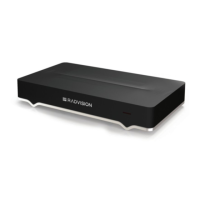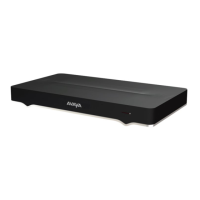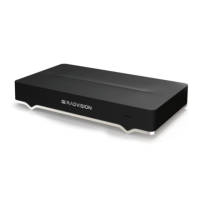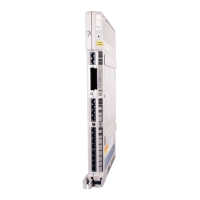Configuring Advanced Network Connectivity
About this task
This section describes how to determine which of the two network ports is the first choice to
communicate on a call, and to configure advanced properties of the network connections in each
network port, including the network speed and packet size (MTU). To avoid connectivity issues,
match these settings to the equivalent settings in the network.
In addition, if your large network is split into virtual sub-networks to limit the range of broadcasts,
known as VLANs, and your network components support 802.1q compliant VLAN tagging, you
can assign a VLAN ID to tag the XT Series as belonging to a specific VLAN.
You can also configure network security authentication to be 802.1x compliant, where it sends a
username and password to your 802.1x authenticator, which verifies the login with the
authentication server. 802.1x is an Institute of Electrical and Electronics Engineers (IEEE)
standard that provides an authentication framework for WLANs. 802.1x uses the Extensible
Authentication Protocol (EAP) to exchange messages during the authentication process. Several
authentication protocols that operate inside the 802.1x framework are suitable for wireless
networks. These protocols allow the network to authenticate the client while also allowing the
client to authenticate the network. In this release, the XT Series supports EAP-TLS (EAP
Transport Layer Security, authentication based on certificates) in addition to EAP-MD5
(authentication based on username/password).
To configure the XT Series for 802.1x compliant authentication, you must import or generate
certificates for 802.1x EAP TLS, as described in
Generating a Certificate Signing Request for
802.1x EAP TLS on page 242.
In some XT Series models, activating the second network port GLAN2
(dual-NIC) requires an
additional license (see Activating the XT Series and its Optional Features on page 105). Both
small businesses and large enterprises may require both network ports (see
Connecting to the
Network on page 57).
Before you begin
If configuring from the endpoint, you must first enable advanced configuration, as described in
Enabling Advanced Maintenance on the XT Series on page 151.
Procedure
1. To assign a preferred network port, access the network priority settings. From the XT
Series web interface, select Administrator Settings > Networks > Preferences >
General. From the endpoint's main menu, select Configure > Advanced > Networks >
Preferences > General.
2. Set the Priority setting to the GLAN port that the preferred network uses. When the routing
of a call cannot be determined by matching the destination address with the GLAN
address, it uses the preferred network port.
3. From the web interface only, select Save.
4. To define the MTU size and network speed for each port, access the advanced network
settings. From the XT Series web interface, select Administrator Settings > Networks >
Advanced Configuration of the XT Series
August 2020 Deployment Guide for Avaya XT Series 156
Comments on this document? infodev@avaya.com

